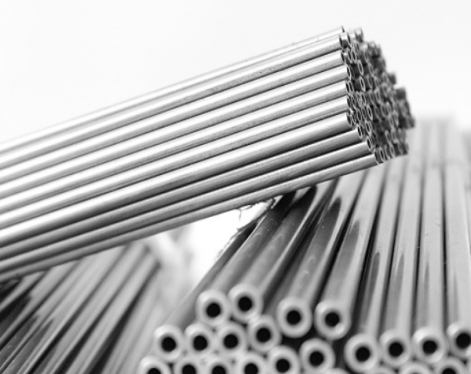The seamless steel pipe is subjected to solid solution treatment during production to soften it. By heating the seamless steel pipe to about 550~850 °C, after a constant temperature for one time, the carbon metal and other various alloys are uniformly dissolved in the austenite. , through the rapid cooling of quenching water, carbon and other alloys have no time to precipitate, and pure austenite structure is obtained, which is called solid solution treatment. So why should seamless steel pipes be solution treated?
The role of seamless steel pipes solution treatment :
1) After the solution treatment, the carbon metal structure and composition are evenly distributed, so that the surface structure of the seamless steel pipe becomes consistent after hot rolling treatment and cooling treatment;

2) Eliminate work hardening in order to continue cold working.
Through solution treatment, the distorted lattice is restored, the elongated and broken grains are recrystallized, the internal stress is eliminated, the tensile strength of the steel pipe is decreased, and the elongation rate is increased;
3) Restore the inherent corrosion resistance of seamless steel pipes.
Due to the precipitation of carbides and lattice defects caused by cold working, the corrosion resistance of seamless steel pipes is reduced. After the solution treatment, the corrosion resistance of the steel pipe is restored to the best state.
For seamless steel pipes, the three elements of solution treatment are temperature, holding time and cooling rate. The solution temperature is mainly determined according to the chemical composition.
Generally speaking, for brands with many types and high content of alloying elements, the solution temperature should be increased accordingly. Especially for steels with high content of manganese, molybdenum, nickel and silicon, the softening effect can only be achieved by increasing the solution temperature and making it fully dissolved.
However, stable steel is prone to intergranular corrosion when the solution temperature is high. In order not to decompose and dissolve the carbides of the stable elements, the carbides of the stable elements are completely dissolved in the austenite, and are precipitated to the grain boundaries in the form of Cr23C6 in the subsequent cooling, usually a lower solution temperature is used.
Tips: In order to ensure that the parameters of the finished seamless pipe sizes meet the user's requirements, it is not only necessary to precisely control the hot-rolled size of the seamless pipe, but also to grasp the size changes during the quenching and tempering heat treatment process.
The role of seamless steel pipes solution treatment :
1) After the solution treatment, the carbon metal structure and composition are evenly distributed, so that the surface structure of the seamless steel pipe becomes consistent after hot rolling treatment and cooling treatment;

2) Eliminate work hardening in order to continue cold working.
Through solution treatment, the distorted lattice is restored, the elongated and broken grains are recrystallized, the internal stress is eliminated, the tensile strength of the steel pipe is decreased, and the elongation rate is increased;
3) Restore the inherent corrosion resistance of seamless steel pipes.
Due to the precipitation of carbides and lattice defects caused by cold working, the corrosion resistance of seamless steel pipes is reduced. After the solution treatment, the corrosion resistance of the steel pipe is restored to the best state.
For seamless steel pipes, the three elements of solution treatment are temperature, holding time and cooling rate. The solution temperature is mainly determined according to the chemical composition.
Generally speaking, for brands with many types and high content of alloying elements, the solution temperature should be increased accordingly. Especially for steels with high content of manganese, molybdenum, nickel and silicon, the softening effect can only be achieved by increasing the solution temperature and making it fully dissolved.
However, stable steel is prone to intergranular corrosion when the solution temperature is high. In order not to decompose and dissolve the carbides of the stable elements, the carbides of the stable elements are completely dissolved in the austenite, and are precipitated to the grain boundaries in the form of Cr23C6 in the subsequent cooling, usually a lower solution temperature is used.
Tips: In order to ensure that the parameters of the finished seamless pipe sizes meet the user's requirements, it is not only necessary to precisely control the hot-rolled size of the seamless pipe, but also to grasp the size changes during the quenching and tempering heat treatment process.









